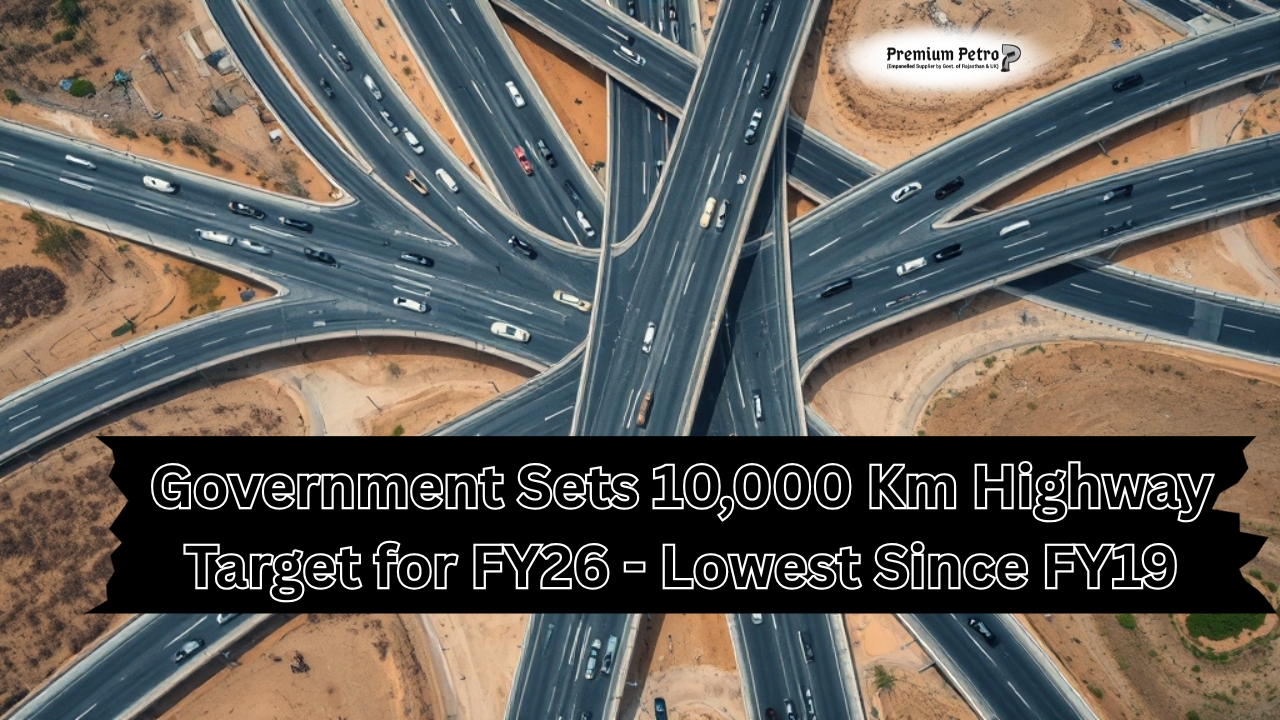2025-04-06 | Pankaj Jangid
FY26 Infrastructure Alert India’s Highway Target Hits 7-Year Low Road Construction

Introduction
India Targets Just 10,000 Km Highways in FY26 - Slowest Growth Since FY19
The Indian government has set an ambitious target to construct 10,000 kilometers of national highways in the fiscal year 2025-26. This target, while substantial, marks the lowest set since the financial year 2018-19. Understanding the implications of this decision requires a closer look at the historical context, underlying reasons, and potential impacts on the nation's infrastructuredevelopment news.
Historical Context
Over the past several years, India's national highway construction has seen varying targets and achievements. For instance, in 2018-19, the target was higher than the current 10,000 km set for 2025-26. The fluctuation in these figures reflects the government's shifting priorities and the challenges faced in infrastructure development.
Details of the 2025-26 Target
The 10,000 km target for 2025-26 includes a significant focus on high-speed corridors and expressways, with plans to construct 5,800 km dedicated to these faster routes. This emphasis aims to enhance connectivity and reduce travel time across major regions.
Reasons for the Reduced Target
Several factors have influenced the decision to set a lower target:
- Resource Allocation: The government may be reallocating resources to other criticalsectors or focusing on the completion of ongoing projects.
- Economic Considerations: Budgetary constraints and economic conditions can impact the feasibility of setting higher construction targets.
- Strategic Planning: A more conservative target allows for a focus on quality over quantity, ensuring that constructed highways meet higher standards.
Funding and Investment Plans
To support this construction target, the government plans to raise significant funds through the monetization of highway projects. Additionally, there is an expectation of substantial private sector investment, highlighting the importance of public-private partnerships in achieving infrastructure goals.
Impact on Infrastructure Development
Setting a 10,000 km target has several implications:
- National Connectivity: Improved highways enhance connectivity between regions, facilitating trade and mobility.
- Economic Growth: Infrastructure development is a key driver of economic growth, potentially leading to increased employment and investment opportunities.
- Regional Development: Focused construction in specific areas can spur regional development and reduce economic disparities.
Challenges in Meeting the Target
Achieving this target is not without challenges:
- Land Acquisition: Securing the necessary land can be time-consuming and contentious.
- Environmental Concerns: Construction activities must address environmental impact and adhere to sustainability practices.
- Financial Constraints: Ensuring adequate funding and managing costs effectively are critical for project completion.
Role of Technology of Road Construction and Innovation
Incorporating technology and innovative practices can enhance efficiency:
- Advanced Construction Techniques: Utilizing modern machinery and methods can speed up construction and improve quality.
- Digital Monitoring: Implementing digital tools for project management can ensure better oversight and accountability.
Envoironmental Considerations
The government is likely to integrate eco-friendly practices:
- Sustainable Materials: Using recycled and sustainable materials can reduce environmental impact.
- Green Corridors: Developing green corridors alongside highways can aid in environmental conservation.
Public-Private Partnerships (PPPs)
PPPs play a crucial role in infrastructure development:
- Investment Sharing: Collaborations can ease the financial burden on the government.
- Expertise Utilization: Private entities bring in expertise and efficiency, contributing to better project outcomes.
Government Policies and Initiatives
Several policies support highway construction:
- Streamlined Approvals: Efforts to reduce bureaucratic hurdles can expedite project initiation.
- Incentives: Providing incentives for private investment encourages participation in infrastructure projects.
Regional Focus
Prioritizing certain regions for highway construction can address specific needs:
- Economic Hubs: Enhancing connectivity to major economic centers can boost trade and industry.
- Remote Areas: Developing infrastructure in remote areas can promote inclusive growth.
Monitoring and Evaluation
Effective monitoring ensures progress and accountability:
- Regular Audits: Conducting audits can identify issues early and keep projects on track.
- Transparency Measures: Public disclosure of project statuses fosters trust and accountability.
Future Outlook
Looking beyond 2025-26, the government aims to continue expanding the national highway network, with long-term goals focusing on creating a robust infrastructure that supports economic growth and meets the needs of a growing population.
Final Conclusion
The government's target to construct 10,000 km of national highways in 2025-26 reflects a strategic approach to infrastructure development, balancing ambition with practical considerations. While it is the lowest target since FY19, the emphasis on high-speed corridors and expressways indicates a focus on quality and efficiency. Achieving this goal will require addressing various challenges, leveraging technology, and fostering public-private collaborations to build a network that supports India's economic and developmental aspirations.
Frequently Asked Questions (FAQs)
1. Why has the government set a lower target of 10,000 km for national highway construction in 2025-26?
The target of 10,000 km is the lowest since 2018-19. This reduction may be due to factors such as a focus on completing ongoing projects, budgetary constraints, and strategic shifts towards developing high-speed corridors and expressways.
2. What portion of the 10,000 km target is allocated to high-speed corridors?
Out of the 10,000 km target, 5,800 km are planned for high-speed corridors and expressways, emphasizing the government's commitment to enhancing faster transportation networks.
3. How does the government plan to fund the highway construction projects?
The government intends to raise approximately ?30,000 crore through the monetization of completed highway projects and aims to attract around ?35,000 crore in private investment to support the construction efforts.
4. What measures are being taken to ensure road safety in the new highway projects?
The government has earmarked funds for implementing cashless treatment for road crash victims across all states and Union Territories, highlighting a focus on improving road safety alongside infrastructure development.
5. How does the 2025-26 target compare to previous years' highway construction achievements?
In comparison, the lowest construction achievement was 10,237 km in 2019-20, and the highest was 13,327 km in 2020-21. The 10,000 km target for 2025-26 reflects a strategic approach, possibly prioritizing quality and specific infrastructure needs over sheer length.
